This article explores the Economic Prosperity Strategy, a major report produced by SPUR and partner groups. Read the full report >>
There is a lot of talk and growing awareness around issues like persistent poverty and income inequality. Solutions, when they are presented, often seem far-fetched—such as Thomas Piketty’s proposed global wealth tax.[1] Just because the obstacles are significant, however, does not mean they cannot be tackled.
At the core are the following overlapping realities: Growth of jobs exists primarily at the top and bottom end of the labor market. Many people earn low wages and have few paths to increase them. The share of employment in the middle is declining and the industries that once occupied the middle — like manufacturing — are increasingly less labor intensive. Add to this persistent challenges like limited funding for K-12 education, rising student debt and tuition for post-secondary education, stagnant wages for many workers, and a growing gap between those with a college degree and those without.
Many hear about these challenges and are overwhelmed by their complexity and seeming intractability. Others think they are not affected by them. Still others gravitate to a narrow solution: Either improve education or raise the minimum wage.
The truth is that we can tackle these issues, albeit through many different approaches. And while it would be easier to reduce poverty with significant investment and/or policies at the state and federal levels, major actions that can be taken at the local and regional scale—and there are people currently working to solve these problems within the Bay Area.
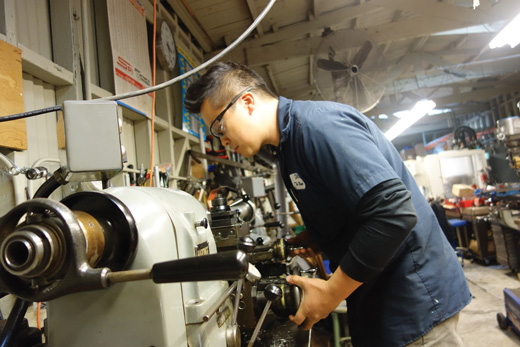
Photo by Ferron Salniker
The Bay Area Economic Prosperity Strategy, the subject of this article, is focused on local and regional policies and programs and their impact on economic opportunities for lower-wage workers. This report sets out to explore possible solutions and provides a regional framework for action. After dozens of interviews and conversations with hundreds of stakeholders, the Bay Area Economic Prosperity Strategy reveals the following:
- Persistent poverty and limited economic opportunity are both regional problems that affect everyone. When so many are left behind, the region’s potential productivity is inhibited, and lower-wage workers are a part of every neighborhood and community in the region.
- No one approach or organization has a monopoly on answers. There is a role for employers and community colleges, community-based organizations and business groups, local government and labor unions.
- The traditional silos of workforce, transportation, land use planning and economic development have to be bridged to solve these issues.
- While the federal and state government are key to helping solve the challenges, much can be done at the local and regional level.

Photo by Jody Meacham, Working Partnerships USA
The Mechanic Career Ladder Training Program is a joint effort of the Santa Clara Valley Transportation Authority (VTA) and the Amalgamated Transit Union Local 265. Above, a graduate of the program demonstrates her skills as a bus mechanic. She was able to advance from cleaning and maintenance to a mechanic job.
The following is a summary of the findings and actions that can be implemented within the Bay Area.
In the Bay Area, more than 1.1 million workers, over one-third of the total workforce, earn less than $18 per hour (or less than $36,000 per year for full-time employment). At current minimum wage levels, the majority of these workers earn less than $12 per hour.[2] Further, the number of jobs that pay wages less than $18 per hour has risen during the economic recovery, and these lower-wage jobs are expected to increase even more over the coming years.
To put these earnings into sharper perspective, a household with two adults and two children in Alameda County would need to earn over $65,000 per year, or more than $30 per hour, just to meet the bare minimum required to cover the costs of basic expenses.[3] Using this same self-sufficiency standard, a four-person household would have to earn close to $60,000 per year in Solano County and over $75,000 per year in San Francisco.
Today, there are too few jobs that pay these “selfsufficiency” wages relative to the number of people struggling in lower-wage jobs. Pathways for upward mobility are limited, and too many of the region’s workers remain in lower-wage jobs without clear paths to advance. The region’s high cost of living compounds the challenge.
Changing this current reality requires breaking down traditional silos and working regionally. It will not be possible to dramatically improve opportunities for lower-wage workers unless neighboring cities, community groups, businesses, labor and other organizations work in partnership.
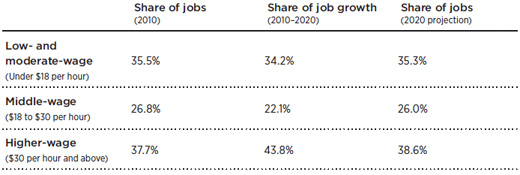
FIGURE 1:
Defining Lower-, Middle- and Higher-Wage Jobs in the Bay Area
Nearly 36 percent of jobs pay less than $18 per hour, and the share of jobs in the middle is projected to decline relative to the proportions of jobs at the top and bottom of the spectrum. This limits opportunities for current lower-wage workers to move up into higher-paying employment.
Improving economic opportunity in the Bay Area will require working on three goals simultaneously:
Goal A: Helping lower-wage workers succeed on pathways into middle-wage employment,
Goal B: Growing the economy with a focus on middlewage jobs, and
Goal C: Improving the conditions and quality of lowerwage jobs for current and future workers.
Key findings of the report:
Lower-wage workers face significant barriers to higher-wage employment. Focusing attention on improving basic skills, establishing training partnerships with employers, helping workers navigate career paths and strengthening social and professional networks can make these barriers surmountable.
Firms are reporting difficulties in finding skilled workers across a wide range of industries and occupations. These hiring challenges will intensify as increasing numbers of previously unemployed workers find jobs, the economy continues to grow and the coming tidal wave of baby boomer retirements hits full force.
Increasing the economic opportunity of lower-wage workers is a region-wide priority. Because lowerwage workers live and work everywhere, this issue is not a concern only for a select group of neighborhoods or communities.
Middle-wage jobs are declining as a share of total employment, and there are too few jobs into which lower-wage workers might advance. About 27 percent of current jobs pay middle wages, and only 22 percent of job growth will occur in the middle. Projections to 2020 indicate that the strongest growth will occur at the top and the bottom: The share of high-wage jobs is expected to rise to 39 percent, and the share of middle-wage jobs will drop from 27 to 26 percent.
Middle-wage work is not concentrated in any one industry. No industries have a majority of middle-wage jobs, though there are some (such as health care, or warehousing) with a higher share of jobs paying middle wages.
Middle-wage jobs are in industries and occupations that are projected to grow as the regional economy expands. This means that overall economic growth is critical to middle-wage job growth. Sector-specific and broad-based economic development tactics could help increase opportunities for middle-wage jobs in these industries.
Most of the major middle-wage occupations are available to workers without significant experience or post-secondary training. Half of the 155 occupations with median wages between $18 and $30 per hour do not require a four-year degree.[4]
Fiscal decisions too often drive economic development and land use decisions. Retail generates local revenue; housing not so much. Job growth in a neighboring city is not often celebrated. There is too little coordination between jurisdictions or even between economic and workforce development. Not enough attention is paid to business retention, particularly the retention of industrial business that some cities see as replaceable or not essential for their future.
NOVA/The Stride Center Tech Career Advancement Initiative
NOVA is a nonprofit, federally funded employment and training agency. The Stride Center is an Oakland non-profit with a 14-year track record of preparing low- and moderate-income workers for entry- and intermediate-level tech jobs. The two groups are leading a regional initiative to promote career advancement and economic self-sufficiency for students currently training for entry- and intermediate-skill tech jobs. The Bay Area Tech Career Advancement Initiative is providing training in professional networking, personal marketing and other “career navigation” skills that are critical for industry professionals seeking to move up a tech career ladder. NOVA has identified four pillars for tech career success: academic, technical, workplace and career navigation. While many education and training institutions focus on academic and technical skill acquisition, very few prepare job seekers for the workplace and navigation skills required for career mobility and advancement.
NOVA and Stride have created a new curriculum that offers students relevant and experience-based training in networking, social media, self-assessment and self-awareness, relationship management and the ability to “read the tea leaves” and respond to company and industry changes.
The curriculum is based on the following foundational understandings:
- Taking charge of one’s own career management.
- Having a positive attitude, being self-reliant and demonstrating a strong work ethic.
- Understanding and harnessing the power of relationships and networks.
- Being flexible and adaptable to technology and employer needs.
A leadership council of Stride alumni is building an employment network for current and former students to help ensure that career navigation becomes an essential part of all future training efforts.
— Luther Jackson is program manager at NOVA.

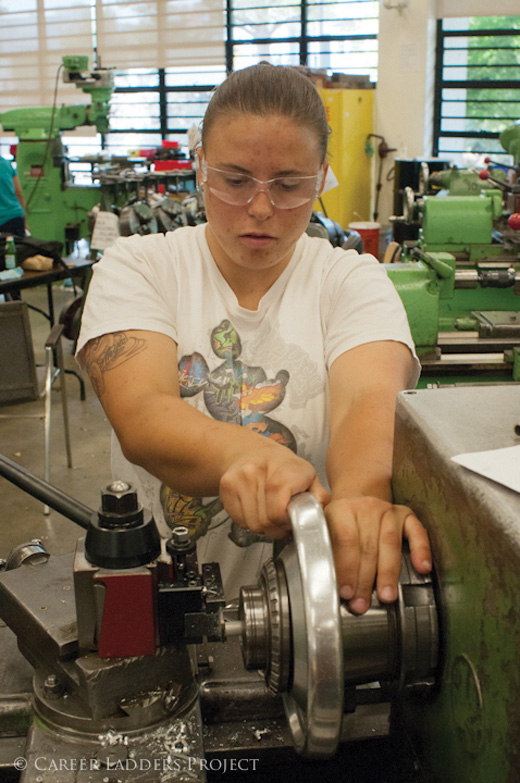
Local barriers to development raise the costs of housing and work spaces and make it more difficult to expand middle-wage employment regionally. Housing costs are high and a burden for most workers. Local opposition to office development makes it harder to expand jobs. Professional service jobs (typically found in offices) are in fact the largest source of middle-wage employment regionally.
The region is underinvesting in its industrial lands and infrastructure needs, both of which threaten middle-wage jobs. Industrial land uses that produce a relatively high share of middle-wage jobs are landintensive and more likely to stay in the region if there are coordinated policies for preserving those land uses. Industrial land in southern Alameda County or eastern Contra Costa needs to be upgraded to attract employers.
Jobs at the lower end of the wage scale are likely to grow over time, and workers typically remain in these jobs for their entire careers. Janitors, landscapers and childcare workers are all jobs that will likely grow over time. And nearly half of all lowerwage workers are over the age of 35.
A lack of economic security means that most workers cannot afford to pursue additional education and training. Lower-wage workers tend to lack stability in both assets and income.
There are fewer clear career pathways for upward mobility, particularly for those who start in lowerwage jobs. Many industries with high concentrations of lower-wage and entry-level jobs (such as hospitality and retail sales) lack middle-wage positions and clear pathways into higher-wage positions.
Improving wages and working conditions for those in lower-wage jobs helps workers achieve enough stability to invest in their futures.
Goals and strategies
The strategies outlined in the Bay Area Economic Prosperity Strategy report reflect a comprehensive, three-pronged approach to economic opportunity. To provide greater opportunities, the region needs to strengthen career pathways, encourage economic growth (particularly in middle-wage jobs) and improve economic conditions for lower-wage workers. Too often, different groups work on each of these goals in isolation. Schools and agencies that promote workforce development focus on improving career pathways or ladders. Business organizations and economic development groups concentrate on economic growth. And community groups and labor partners emphasize improving conditions for those at the bottom. To enhance the chances of success, we must pursue these three approaches simultaneously and regionally.
Goal A: Pathways to the middle
Strengthen career pathways to middlewage jobs.
The job market is changing. Most job openings in the next decade will be to replace retiring workers. A larger percentage of job openings will be in fields that involve direct contact with customers and in service industries. The internet has revolutionized the ways people search for, find and apply for jobs.
Due to these changes, the workforce preparation system in California and across the nation is undergoing substantial transformation in how people need to prepare for and find jobs, even in an era with significant cuts in funding for workforce training and education.

When we spend money on things like solar power, it’s not just good for the environment, it’s good for jobs.
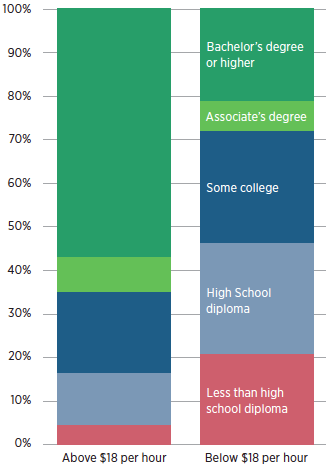
FIGURE 2:
Education level by wage level
Nearly half of all lower-wage workers have a high school diploma or less compared with under one-fifth of workers earning over $18 per hour.
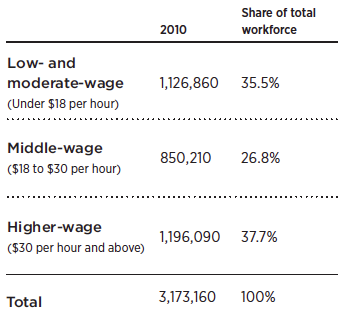
FIGURE 3:
Wage structure of the Bay Area workforce
Lower-wage workers make up over 35 percent of the region’s workforce. There are about 3.2 million workers in the Bay Area, with 1.1 million of them earning $18 per hour or less.
Source: 5-year 2011 US Census, American Community Survey (PUMS data). http://www.census.gov/acs/www/data_documentation/public_use_microdata_s…
Understanding these changes and preparing workers for them is essential to getting them on a pathway to the middle. The following are the three strategies to make this happen:
Strategy 1: Expand job-focused, basic skills training. The first strategy focuses on providing what workers need in order for training to be successful—for example, by helping them improve their basic skills such as English as a second language (ESL) and digital literacy. The Building Skills Partnership in Silicon Valley is an example of contextualized learning as it provides English language and other job-related training to janitors (often with pay) in partnership between The Service Employees International Union—United Service Workers West (SEIU-USWW), companies and building maintenance contractors.
Strategy 2: Establish industry-driven, sectorbased regional training partnerships. The second strategy focuses on making sure that the training results in actual job placements—for example, by establishing ongoing partnerships with employers to develop training curricula. The Bay Area Consortium for Water and Wastewater Education (BACWWE) is an example of a regional in industry partnership where the industry is helping design the curriculum, teach the courses and finance the program while students are getting trained in a way that is leading directly to jobs.
Strategy 3: Improve career navigation systems and support pathways, at the K-12 level and beyond. The third strategy focuses on improving job-search and career-navigation counseling so that workers who get the proper training are then able to secure middlewage jobs. This is particularly important to help workers and students stay connected to a professional and work network as they move through careers that have frequent job changes. The Stride Center in Oakland is working with the NOVA Workforce Board on a career navigation strategy to connect trainees in a technology program with graduates who have already secured jobs.
Growing middle-wage jobs in a transit-oriented job center
When NUMMI shut its Toyota factory in Fremont in 2010, over 4,700 jobs were lost. Four years later, Tesla now houses 4,000 jobs in the same space and their purchases from suppliers (like seats or dashboards) support thousands more. The quick return of middlewage manufacturing jobs shows that the Bay Area can still be an industrial center.
Warm Springs, the area around the Tesla plant, is currently home to other companies like Western Digital and Thermo Fisher. In late 2015, the first new BART station will open as part of the BART extension into San Jose.
Recognizing the lack of job centers around BART stations south of downtown Oakland, the City of Fremont approved a specific plan establishing Warm Springs as a transit-oriented job center with up to 20,000 jobs and 2,700 housing units. In addition to the regional benefit of putting more jobs near transit, it is also important for BART to increase the number of destinations to support two-way travel flows (i.e., more travelers commuting south on BART). The plan still has details to be worked out in its implementation — such as the extent of affordable housing within the station area as well as community benefits such as local hire hire. If these issues are resolved, the plan would represent an example of how to connect the various components of the Economic Prosperity Strategy – from providing an environment for growing industries of opportunity to balancing the need for housing, industrial land and jobs near transit, to infrastructure investment and making more efficient use of the transit system.
Key lessons:
- More of the Bay Area’s rail stations should be planned as job centers. The Fremont plan focuses primarily on employment activities with a smaller area in the halfmile focused on residential development.
- Manufacturing can grow within the Bay Area and co-exist in a transit-oriented environment. The Tesla factory is within a half mile of BART.
- Multiple rail stations should be treated as part of a corridor. The Warm Springs/ South Fremont BART station is the first of three new stations. Fremont has the opportunity to plan for Warm Springs at the same time it is implementing a plan for its downtown (around the Fremont BART station).
Maurizio Pesce, Tesla Factory, Fremont, October 1, 2001
When NUMMI shut down in 2010, the Bay Area retained auto manufacturing when Tesla took over a portion of the site for their factory. The surrounding 850 acres is planned as an employment center with up to 20,000 jobs surrounding the Warm Springs BART station.
Goal B: Economic growth
Grow the economy with a focus on middle-wage work.
Because there are not enough jobs in the middle to move all the region’s 1.1 million lower-wage workers into good-paying middle-wage positions, it is essential to grow the region’s base of middle-wage jobs. This is challenging as the industries with the largest numbers or shares of middle-wage jobs are spread throughout and often tied to the health of the entire economy. For example, middle-wage jobs in construction, health care, transportation and logistics and even professional services are closely tied to the health of the regional economy. This means that expanding middle-wage employment will require many of the same policies and investments that are part of a standard regional economic development strategy.
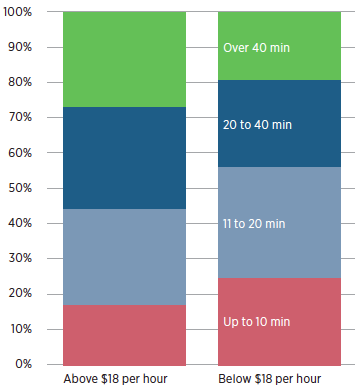
FIGURE 4:
Commute times, by wage level
Lower-wage workers typically have short commutes, with 56 percent commuting less than 20 minutes each day and only one in five having a commute longer than 40 minutes.
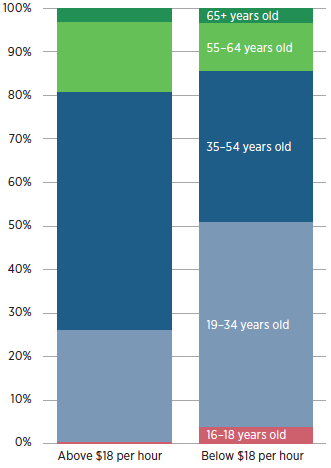
FIGURE 5:
Percentage of Bay Area workers at different wage levels, by age cohort, 2010
For many workers, lower-wage jobs are not a stepping stone to higher-paying work, as workers often stay in such jbs throughout their entire working lives. Over half of lowerwage workers are 35 or older.
Source: Figure 4: SPUR analysis, U.S. Census, Longitudinal Employer-Household Dynamics (LEHD, 2011). lehd.ces.census.gov/data/;
Figure 5: Source: 5-year 2011 US Census, American Community Survey (PUMS data).www.census.gov/acs/www/data_documentation/public_use_microdata_sample/
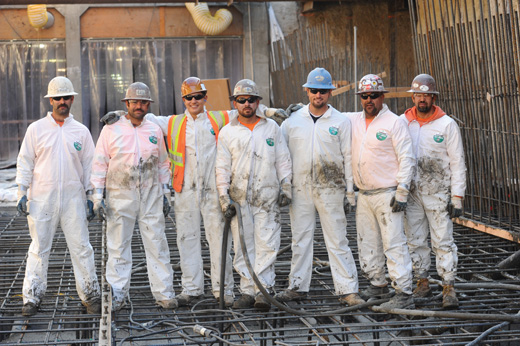
Photo by Noah Berger
Marco Jimenez, Alfredo Jimenez, Jorge Arrizon, Mario Jimenez, Ramon Castillon on site at the new BART Warm Springs station which has been established as a transitoriented job center (see sidebar, p. 8).
Raising the floor through changes to local labor standards
Numerous cities are exploring local increases to the minimum wage that surpass the state minimum (which is currently $9). In 2003 and 2010 respectively, San Francisco and San Jose adopted ballot measures to raise their local minimum wage, which are now both over $10 per hour. This November, San Francisco will vote on another increase to $15 in 2018 and Oakland to $12.25 in 2015. Berkeley’s City Council has already adopted a measure to increase to $12.53 in 2016 and Richmond’s to $12.32 by 2017. Sunnyvale and Mountain View are finalizing local measures through their city councils to increase to the wage level in San Jose. While the specific local coalitions and politics vary, these measures emerge from the common recognition that the state minimum wage is simply too low relative to the region’s cost of living and that local increases are a direct way for localities to improve conditions for tens of thousands of low-wage workers in our communities.
For the purposes of the Economic Prosperity Strategy, these disparate campaigns and policy measures reflect real action on the ground to improve conditions. They also present an opportunity to increasingly coordinate and unify measures so that all low-wage workers across Bay Area cities can enjoy improved conditions. The Economic Prosperity Strategy process brought together dozens of people working in many of these cities to talk about how to better align these initiatives. The next step is to connect activists with local staff and other supporters to work on how to raise the floor across a larger geography. Mayor Bates of Berkeley argued for such an effort earlier in 2014 as did Mayor Garcetti of Los Angeles who argued that all nearby cities should pursue a common minimum wage increase.
These efforts lead to three lessons:
- Establish a common methodology to analyze and discuss minimum wage impacts. This will help alleviate potential uncertainties, particularly in the smaller jurisdictions with limited staff resources.
- Propose common ordinances across multiple cities within the region. This is more than just aligning wage levels. Also important are making sure enforcement and exemptions are also consistent.
- Consider related raise-the-floor mechanisms. The minimum wage should be part of a broader set of local and regional strategies to improve conditions for lowwage workers. Oakland’s minimum wage measure, for example, includes between 5 and 9 paid sick days per year.
While those policies are necessary for economic growth, they are not enough on their own to produce a major increase in the number of middle-wage jobs. In short, Goal B seeks modifications to these policies to ensure there are substantial middle-wage job openings in the future (given that middle-wage jobs are a small share of overall job growth). The following are four key strategies that can be taken up by cities, regional entities, employers and a range of organizations:
Strategy 4: Focus economic development resources on investing in industries of opportunity, forming and expanding businesses and better coordinating policy among jurisdictions. Local economic development efforts should move toward growing broad sectors with middle-wage jobs. This approach will be successful as communities coordinate and plan economic development efforts across jurisdictional boundaries. Design it-Build it-Ship (DBS) project is an example of coordinated economic development with a focus on industries of opportunity. This consortium of 10 East Bay Area community colleges, five workforce boards, UC Berkeley, CSU Eastbay, East Bay EDA and other regional partners is focused on a range of middle-wage intensive industries - biotech, chemical, petroleum, medical devices, and transportation/logistics.
Strategy 5: Develop land use plans that accommodate the region’s growth, including housing at all income levels, job centers in transit-accessible locations and reinvestment in industrial areas. The production of new housing, smart land use planning for jobs (such as encouraging major employers to locate in transit-accessible centers) and development of a regional strategy for preserving and enhancing industrial lands are key to expanding middlewage employment. The five-city Northern Waterfront Initiative in Contra Costa County is an example of a multi-jurisdictional approach to economic development with an emphasis on middle-wage jobs and industrial development. Further implementation of this idea could involve establishing a new industrial investment program at MTC that would encourage planning across multiple cities along a corridor (such as I-880 in Alameda County) around goods movement, industrial land planning, and related industries.
Strategy 6: Rebuild and expand infrastructure in a way that supports economic development and job growth. Infrastructure lays a foundation for longterm economic growth and supports middle-wage jobs in both construction and maintenance. Identifying new local and regional sources to finance needed infrastructure investment is critical. The public-private partnership of the Presidio Parkway is an example of a new approach to financing.
Strategy 7: Manage the region’s transportation as an integrated system. Workers should be able to access good jobs throughout the region no matter where they live. This strategy includes making the region’s public transit look and feel unified, as well as expanding and coordinating non-transit options, such as car sharing and shuttles in both urban and rural environments. The moves towards establishing common fares across all transit operators that use Clipper is a small step and an early example of this strategy.

FIGURE 6:
Job openings by median wage, 2010–2020
A larger share of job openings are coming from replacement jobs (such as when someone retires) than from new job growth.
Source: California Employment development Department (EDD), Labor Market Information. www.labormarketinfo.edd.ca.gov/
Goal C: Economic security Improve conditions for workers in lower-wage jobs.
Not all workers will move up to middle-wage employment, as there are simply not enough jobs in the middle. Jobs at the bottom of the wage scale are not going away either. Therefore, improving the conditions of jobs at the bottom will expand economic opportunities for low- and moderatewage workers.
The strategies in Goal C seek to enhance economic security by focusing on changes to hiring, employment and compensation practices in the lowerwage segment of the labor market. Achieving basic economic security through work is an essential part of improving economic and career mobility. Quite simply, too many workers are struggling just to fulfill basic needs for food, shelter and security. Improving economic security means these needs will be better taken care of, thus allowing workers to pursue goals like education, enhanced training or improved career navigation.
Strategy 8: Raise the floor by increasing minimum standards for equal opportunity, working conditions and compensation in lower-wage occupations. This strategy focuses on setting uniform labor standards across an entire geographic area, such as a city or county. The minimum wage efforts in various Bay Area cities reflect the interest in raising the floor. See “Raising the floor through changes to local labor standards” for more information.
Strategy 9: Organize and professionalize industries to improve wages, benefits and career ladders. This strategy focuses on professionalizing and improving conditions for all workers in a specific industry. Examples include the first-of-its kind licensing requirements for the more than 30,000 dental hygienists in California as well as organizing efforts to raise wages and improve conditions for janitors over the past several decades.
Strategy 10: Establish standards to ensure that the investment of public dollars is aligned with the goal of economic opportunity. This strategy focuses on the direct role played by public sector entities as market actors by setting baseline measures for investments that are connected to public sector funding or policy decisions. The Community Benefits Agreements for the Oakland Army Base and the Hunters Point Shipyards are good examples of helping move forward major investments with some certainty towards community benefits such as local job access, labor neutrality, and investment in affordable housing.

Photo by Sergio Ruiz
At right, groundskeepers, like janitors and security guards, are examples of lowerwage jobs that are likely to remain and grow over time. These are also jobs that require the worker to be on site and thus not likely to be shifted to another region.
Paths to economic opportunity
It is the totality of these 10 strategies that will set the Bay Area on a path towards greater economic opportunities for lower-wage workers and broad-based economic prosperity.
While each strategy is based on analytic findings, not every strategy is appropriate for every city or place. Some local entities (e.g. cities, Workforce Investment Boards) may have adopted or implemented many of these ideas already. Some places may lack the market or political conditions for some of the tools to be viable.
In conclusion, the work of the Economic Prosperity Strategy points towards three lessons:
- Work regionally. Cities alone cannot reshape economies, and local solutions are incomplete. Regional solutions include: regional labor standards and minimum wages, subregional housing allocation and planning approvals, improved regional transit connectivity, regional permit processes and fees, regional tax sharing and revenue agreements.
- Be proactive to grow the middle. Economic growth is necessary to expand the middle; but it is insufficient on its own to expand the share in the middle. There needs to be a proactive approach to middlewage jobs.
- Break down silos. Silos need to be broken down to change the paradigm for lower-wage workers. Local and regional entities should work beyond their traditional silos and share the best practices and innovative models across the region. The Bay Area is at the forefront of working to solve many of these challenges. The major barrier is scale—we must expand successful existing programs to more people and collaborate more effectively across boundaries.
Endnotes
[1] In his book Capital, James Piketty argues that with disparities in income and wealth rising substantially over recent decades, a global progressive tax on individual net worth would offer the best option for keeping inequality under control.
[2] $18 per hour is equivalent to approximately 80 percent of the region’s median wage. In this report, it represents the bottom end of the range of middlewage jobs. This report defines middle-wage jobs as those that pay between $18 and $30 per hour. The team selected $30 per hour as the upper end of the middle-wage job spectrum because it is a natural breakpoint on the wage scale. For example, there were not many jobs with median wages between $30 and $35.
[3] The earnings are based on the Family Economic Self-Sufficiency Standard, which covers expenses for housing, food, child care, transportation, health care and taxes. See: www.insightcced.org/calculator.html
[4] This project identified the occupations with the most middle-wage job openings, including both job openings that result from employee turnover and those that result from growth. The analysis then filtered the list by education requirements. Since this project is oriented toward solutions for the current lower-wage workforce, jobs requiring four-year degrees or extensive experience are less viable pathways into better-wage work than jobs with skill and experience requirements that mirror the skills and experiences that lower-wage workers cultivate while working.
The research that provided the basis for this publication was supported by funding under an award to the Metropolitan Transportation Commission (MTC) from the U.S. Department of Housing and Urban Development.

